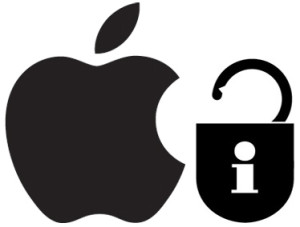Our Apple IDs are crucial to many of the Apple services we rely on: All the content we buy via iTunes, all our data stored in iCloud, communications systems like iMessage and FaceTime, even ordering physical goods from Apple’s online store. But despite that ubiquity, there are situations where dealing with an Apple ID is a headache.

In a recent Ask the iTunes Guy column, I discussed Apple ID frustrations, but for many of the questions about Apple IDs that I receive from users, the answer is disappointingly the same: “You can’t do that.” Here are just three Apple ID-related issues that would ease the lives of many a user of Apple products.
Merging Apple IDs
I get many emails from people who would like to merge Apple IDs, so that all their content is connected to just a single account. They may have ended up with more account because they created one Apple ID with an email address they no longer use, and a second one with a current email address–often an Apple address, such as a mac.com, me.com or icloud.com address. In another common situation, a recently married couple may want to share their content.
Currently, Apple doesn’t let users merge two Apple IDs, which does unfortunately lead many users with no recourse but to deal with the time-consuming hassle of having to log in and out of different accounts to consume their media, or–more financially draining–re-purchase certain types of content. (Note that this doesn’t affect iTunes music sold without DRM; that’s painless to share across multiple Apple IDs.)
One potential hurdle to merging would be requiring the owners of each Apple ID prove their identity; in some cases, this may be difficult if, for example, one of the Apple IDs is connected to an email address that is no longer used. In that case, any verification email Apple sends to that address would disappear into the void.
Another option could be allowing users to link two or more Apple IDs. In a situation like that, the old Apple ID would still exist, but would act as a sort of alias for the new one. The content would still be linked to that Apple ID, but the “master” Apple ID would be able to authorize this content. This link could work for users with an old Apple ID they no longer use, but also for a couple wishing to share content.
Apple is, at least, aware of this issue. In October 2011, Tim Cook told a customer that Apple was working on merging Apple IDs, but Apple hasn’t said anything publicly about it since. As our Apple ID becomes tied to even more and more services and the number of Apple products only increase, this issue is going to become more and more common. Apple would establish a lot of goodwill by creating a process to let users painlessly link or merge two accounts.
Splitting Apple IDs
On the other side of the fence, we have the need to split Apple IDs. This, admittedly, is a bit more complex than merging accounts, and usually occurs in two common situations. The first is break-up or divorce. If a couple has been purchasing content using a single Apple ID, and then splits up, the exes may want to divvy up their movie and app collections. The only real option now is for them to both use the old Apple ID and create a new one for the future–which leads us back to the problem of maintaining multiple Apple IDs.
The other common case is when a parent initially buys content for children, who later grow up and become old enough to have their own Apple IDs. (This has happened in my own family.) The child wants to retain content they bought under the parent’s account, and the parent will likely concur–especially if they no longer want to subsidize their progeny’s music, movie, or app habit.
In both cases, if more than one person is using a single Apple ID, only one of them can use iTunes Match. That is, folks who share an Apple ID can put only one iTunes library in the cloud, making the service unusable for the sharer with different music tastes. (Or requiring a merging of iTunes libraries.)
Splitting an Apple ID is obviously a bit more complicated, as it would require that users be able to decide exactly which content they want to retain, and which items to transfer ownership of to an ex or child–or would require extraordinary measures like Apple and the content providers being willing to let the split accounts retain separate copies of the content.
Bequeathing content purchased from Apple
We’re still in the first generation of buying digital content, but I’ve already had several questions from people asking what happens to someone’s iTunes Store content after they die. My recommendation is that spouses or children record Apple IDs and passwords just as they would any other important information, and, if one person passes away, their heirs can use that account information to access the content. But Apple should offer a way to pass on content linked to a deceased person’s Apple ID.
The fine print
I was surprised to find that Apple has no terms and conditions specific to Apple IDs. When you create an Apple ID, Apple has you check a box stating that you “have read and agree to Apple Terms of Service.” This links to the Apple Legal page, which leads you to many long legal documents, but none that specifically discuss the creation of an Apple ID, nor any rights or responsibilities relative to that Apple ID for either Apple or customers. And Apple’s iTunes Store Terms and Conditions says nothing relative to managing Apple IDs.
However, Apple’s iCloud Terms and Conditions do state that:
“You agree that your Account is non-transferable and that any rights to your Apple ID or Content within your Account terminate upon your death.”
Given that this is in the document relative to iCloud, I read this as applying to content such as emails, contacts, calendar events, and so on–and not to iTunes Store content. This said, I would think that a spouse or heir should be entitled to emails belonging to a deceased relative.
Apple IDs have become a serious frustration for many users. Apple truly needs to find a way to resolve these issues. No one should lose content they’ve bought from Apple just because they no longer have access to an email address, and the need to merge and splitting Apple IDs are becoming more and more common. As Apple approaches a total of 1 billion iTunes Store accounts, it’s time for the company to start looking at the future of these accounts that are an increasingly important part of our lives.





